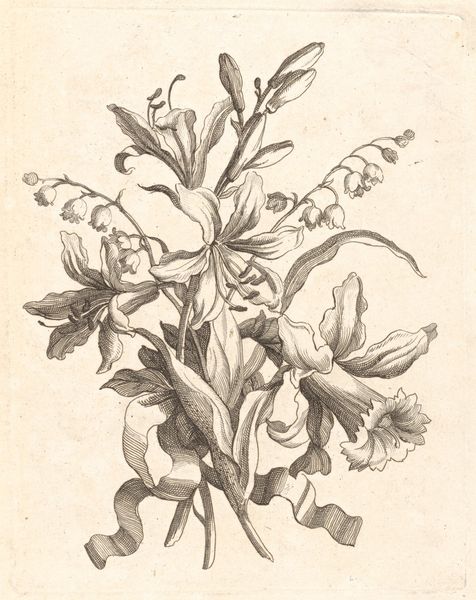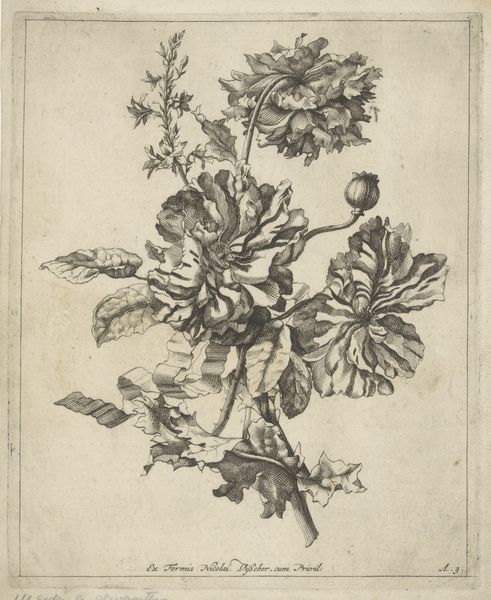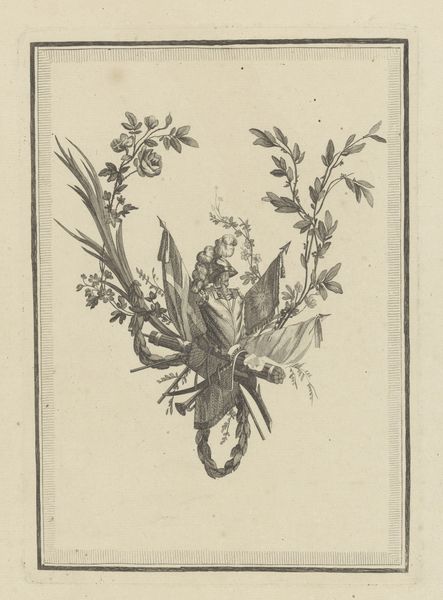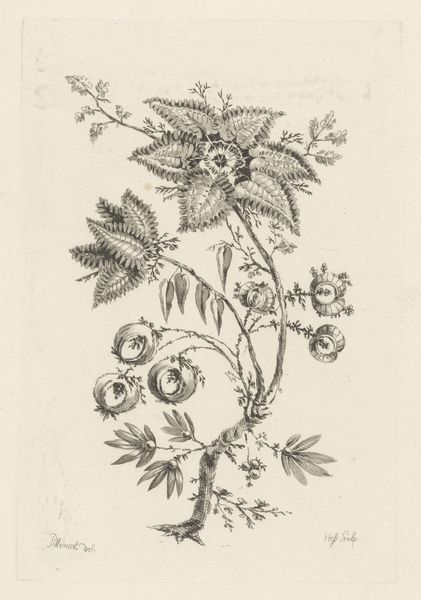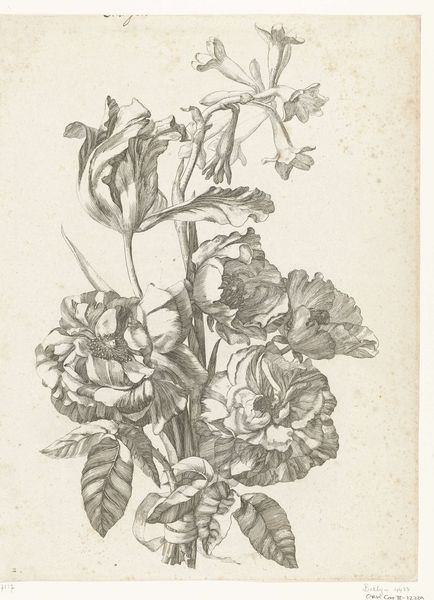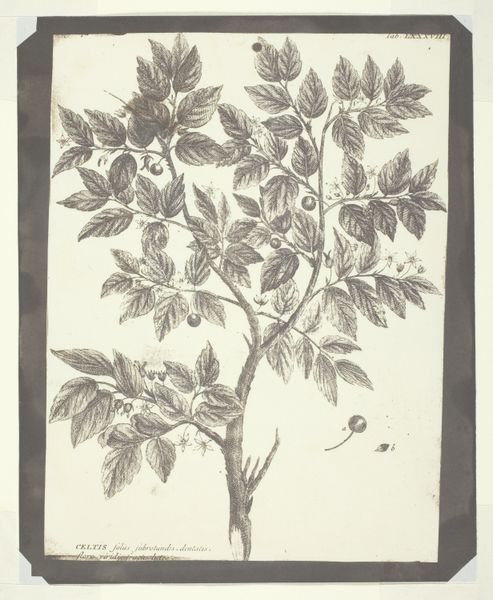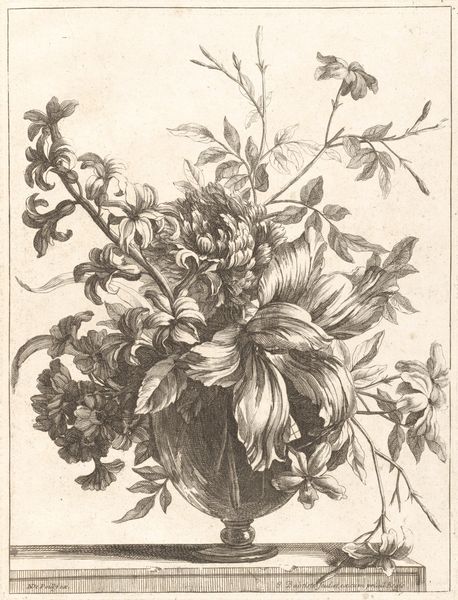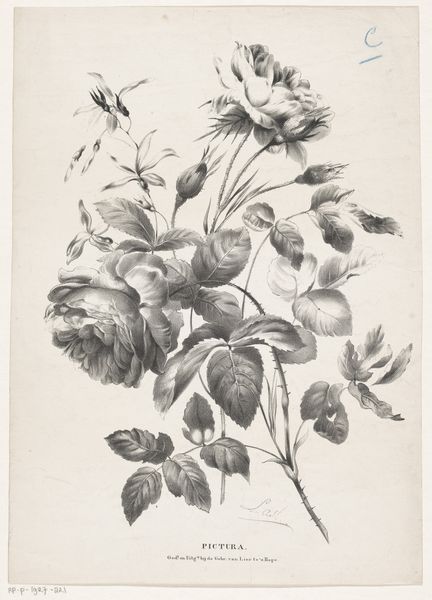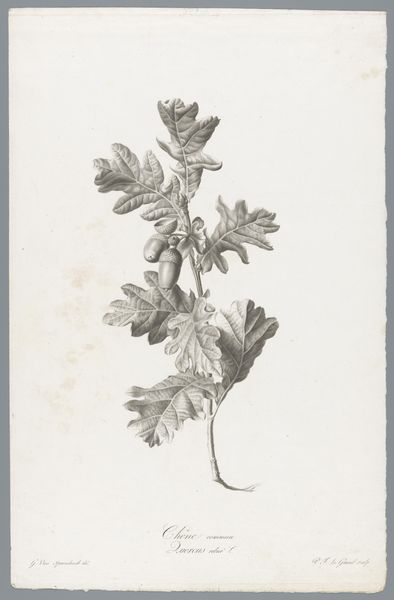![[Small Bouquets Tied With A Ribbon] by Jean-Baptiste Monnoyer](/_next/image?url=https%3A%2F%2Fd2w8kbdekdi1gv.cloudfront.net%2FeyJidWNrZXQiOiAiYXJ0ZXJhLWltYWdlcy1idWNrZXQiLCAia2V5IjogImFydHdvcmtzL2E5NDBiOWFmLTM5ODMtNDExZS05NjgwLTRmZTE1MjE5YWM0Yi9hOTQwYjlhZi0zOTgzLTQxMWUtOTY4MC00ZmUxNTIxOWFjNGJfZnVsbC5qcGciLCAiZWRpdHMiOiB7InJlc2l6ZSI6IHsid2lkdGgiOiAxOTIwLCAiaGVpZ2h0IjogMTkyMCwgImZpdCI6ICJpbnNpZGUifX19&w=3840&q=75)
[Small Bouquets Tied With A Ribbon] 1656 - 1699
0:00
0:00
drawing, print, engraving
#
drawing
#
baroque
# print
#
botanical drawing
#
engraving
Dimensions: Overall: 16 1/4 x 11 7/8 x 3/16 in. (41.3 x 30.1 x 0.4 cm)
Copyright: Public Domain
Curator: At first glance, this print exudes a certain restrained elegance. The contrast and delicacy of the lines... it draws you in. Editor: It does, doesn't it? What we have here is "[Small Bouquets Tied With A Ribbon]", a print – specifically an engraving – by Jean-Baptiste Monnoyer, who was active in the latter half of the 17th century. Curator: The choice of monochromatic rendering truly amplifies the gradations of form and light, wouldn't you agree? Observe how the intricate play of lines delineates the individual petals. The strategic deployment of shadow... quite compelling, I must say. Editor: Absolutely, I see the focus on floral still-life and believe it connects to broader social shifts in the 17th and 18th centuries, notably the rise of natural science and its influence on visual representation. Monnoyer was, after all, documenting and cataloging, aesthetically, of course. Curator: Precisely! Monnoyer, working in this Baroque idiom, was highly influenced by the demands of royal and aristocratic patrons seeking to express wealth and status through depictions of gardens and the natural world. These artworks were as much about power as they were about visual appeal. Editor: That interplay between artistic skill, observation, and representation… Note the ribbon binding the stems; it’s a detail that elevates a common bouquet, suggesting refinement through form, structure and balance. A beautiful application of form. Curator: Yes, the ribbon does provide that touch of aristocratic refinement, as well as the more traditional "Vanitas" meaning of how material beauty is so fleeting. Editor: It's remarkable how Monnoyer used these prints to make beauty accessible. Curator: Agreed! It highlights the intricate role that artistic renderings played during this historical era to both celebrate beauty and enforce a silent societal order. I hadn't considered that. Editor: I hope our insights give people a greater appreciation for both the formal skills and cultural forces at play in works like these. Curator: Agreed. This intersection is where visual enjoyment and intellectual inquiry intersect, giving dimension to both, don’t you think?
Comments
No comments
Be the first to comment and join the conversation on the ultimate creative platform.
